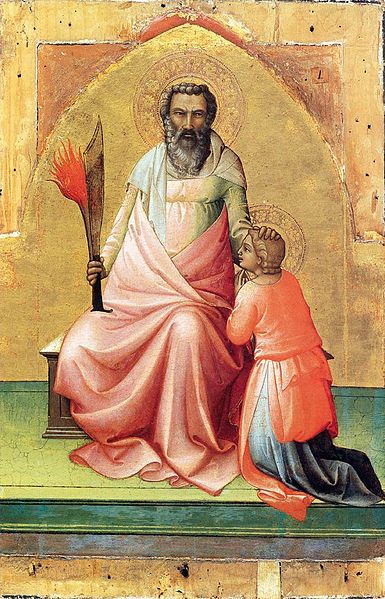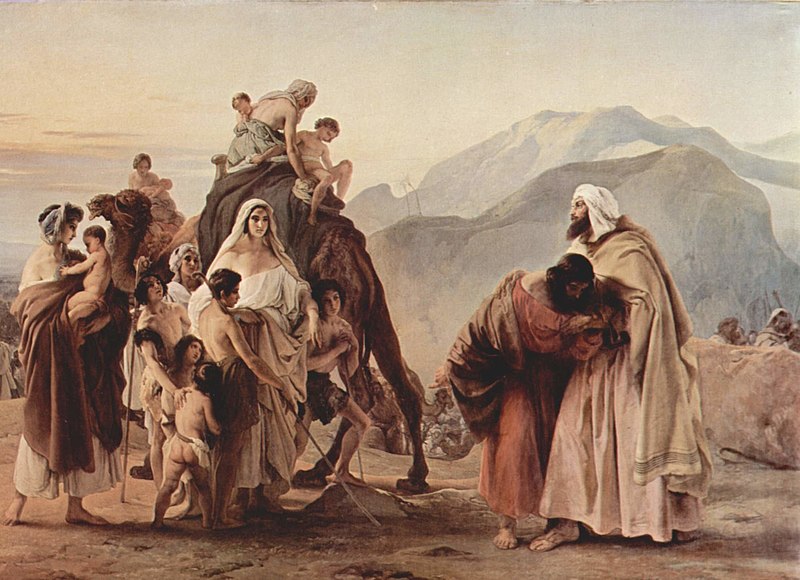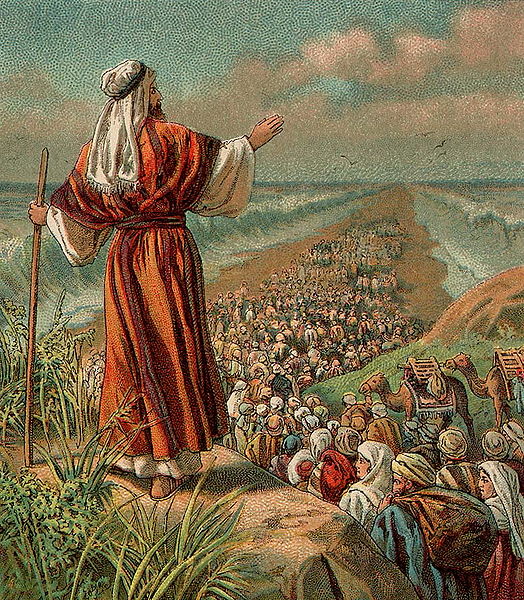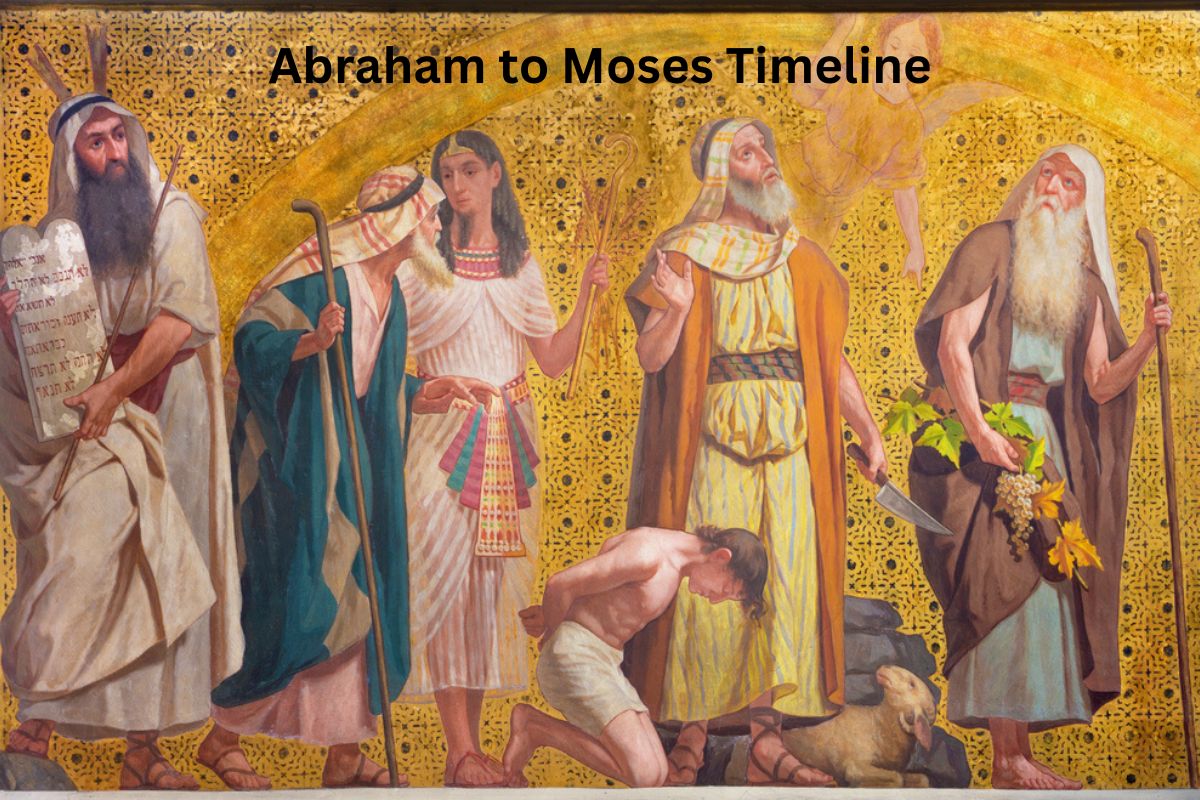The period from Abraham to Moses is a crucial epoch in biblical history, encompassing foundational events and figures in the narratives of Judaism, Christianity, and Islam.
This era begins with the patriarch Abraham, who received a divine covenant and promises of descendants as numerous as the stars. It continues with Isaac and Jacob (later known as Israel), who played pivotal roles in the formation of the twelve tribes of Israel.
The subsequent figures, Joseph and Moses, lead the way to the Exodus, a transformative event that marks the liberation of the Israelites from Egyptian slavery and the reception of the Ten Commandments and the covenant at Mount Sinai.
This timeline unfolds a rich tapestry of faith, redemption, and divine guidance, shaping the religious and cultural heritage of these monotheistic traditions.
| Figure | Approximate Timeframe (BCE) | Key Details |
|---|---|---|
| Abraham | 2000-1800 | Born in Ur, made a covenant with God, father of Isaac |
| Isaac | 1800-1600 | Son of Abraham and Sarah, father of Jacob and Esau |
| Jacob (Israel) | 1700-1500 | Son of Isaac, father of the 12 tribes of Israel |
| Joseph | 1600-1500 | Rose to prominence in Egypt, reunited with family |
| Moses | 1500-1400 | Received God’s call at the burning bush, led the Exodus |
| The Exodus | 1440-1400 | Israelites left Egypt after plagues, wandered in the wilderness |
| The Ten Commandments and the Covenant | 1400 | Moses received the Ten Commandments on Mount Sinai |
| Moses’s Death | 1400 | Moses died on Mount Nebo, succeeded by Joshua |
Timeline of Abraham to Moses
1. Abraham
Abraham is a prominent figure in the Bible, considered the father of three major monotheistic religions: Judaism, Christianity, and Islam.
He was born in Ur of the Chaldeans, which was located in Mesopotamia (modern-day Iraq).
God called Abraham to leave his homeland and go to a land that God would show him. This event marked the beginning of Abraham’s journey of faith.
Also Read: Abraham Timeline
God made a covenant (a solemn agreement) with Abraham, promising to make him the father of a great nation, even though he and his wife Sarah were elderly and childless.
Abraham and Sarah eventually had a son named Isaac, who was seen as the child of promise, as he was born in their old age.
Abraham’s faith in God and willingness to obey God’s commands, including the willingness to sacrifice Isaac (though God ultimately provided a ram for the sacrifice), are significant aspects of his story.

2. Isaac
Isaac was the son of Abraham and Sarah, and he played a crucial role in the fulfillment of God’s covenant with Abraham.
He was born to elderly parents who had initially been barren, making his birth a miracle.
Isaac’s name means “he laughs,” reflecting the laughter of both Abraham and Sarah upon hearing that they would have a child in their old age.
Also Read: Timeline of Moses in the Bible
Isaac was the second patriarch of the Israelite people, following in the footsteps of his father, Abraham.
He had twin sons, Jacob and Esau. The rivalry between Jacob and Esau is a significant part of their story, with Jacob eventually receiving the birthright and blessing from Isaac.
Isaac’s life is characterized by his role as a patriarch and the passing on of the covenant from Abraham to the next generation.
3. Jacob (Israel)
Jacob, whose name was later changed to Israel, was the son of Isaac and Rebekah and the grandson of Abraham.
His name “Jacob” is often interpreted as “heel-catcher” or “supplanter” because he was born holding onto his twin brother Esau’s heel.
Jacob and Esau had a complicated relationship and rivalry. Jacob tricked Esau out of his birthright and later received his father Isaac’s blessing.
Jacob’s life took a significant turn when he had a vision of a ladder reaching up to heaven, and God renewed the covenant with him. As a result, his name was changed to Israel, which means “he who struggles with God.”
Jacob had twelve sons, who became the founders of the twelve tribes of Israel. These tribes played a central role in the future history of the Israelites.
The story of Jacob’s wrestling with an angel is another significant episode in his life, symbolizing his ongoing struggle and relationship with God.

4. Joseph
Joseph was one of the twelve sons of Jacob (Israel) and his beloved wife Rachel. He was known for his colorful coat, which his father Jacob gave him as a symbol of his favoritism, causing jealousy among his brothers.
Joseph’s brothers, out of jealousy, sold him into slavery in Egypt when he was a young man. They then deceived their father into believing that Joseph had been killed by a wild animal.
In Egypt, Joseph was sold to a high-ranking Egyptian named Potiphar and eventually became the overseer of Potiphar’s household due to his integrity and wisdom.
Despite facing adversity and false accusations, Joseph’s faith and character led to his rise in Egypt, eventually becoming Pharaoh’s chief advisor.
Joseph interpreted Pharaoh’s dreams, which foretold a coming famine. He recommended storing grain during the years of plenty to prepare for the famine, which saved Egypt and neighboring lands from starvation.
Joseph’s brothers, who had traveled to Egypt seeking food, eventually recognized him when they came to buy grain. Joseph forgave them and invited his family to settle in Egypt, where they would be cared for during the famine.
Joseph’s story illustrates themes of forgiveness, redemption, and God’s providence in times of hardship.

5. Moses
Moses is one of the most significant figures in the Bible and plays a central role in the history of the Israelites.
Born during a time when the Pharaoh ordered the killing of Hebrew male infants, Moses’ mother placed him in a basket and set him adrift on the Nile River. He was found and adopted by Pharaoh’s daughter, who raised him as her own.
As an adult, Moses fled Egypt after killing an Egyptian taskmaster who was mistreating a Hebrew slave.
While tending sheep in the wilderness, Moses encountered God at the burning bush, where he received a divine call to lead the Israelites out of slavery in Egypt.
Moses, along with his brother Aaron, confronted Pharaoh with God’s demand to let the Israelites go. After Pharaoh’s resistance, a series of ten plagues befell Egypt, culminating in the Passover and the Israelites’ departure from Egypt.
Moses led the Israelites on their journey through the wilderness for forty years, during which time they received the Ten Commandments and other laws on Mount Sinai.
Moses’ leadership was characterized by miracles, such as the parting of the Red Sea, and his role as a mediator between God and the Israelites.
Moses’ death occurred just before the Israelites entered the Promised Land, and he was succeeded by Joshua.
6. The Exodus
The Exodus is a central event in the Bible, marking the liberation of the Israelites from slavery in Egypt. It took place approximately between 1440 and 1400 BCE.
The Israelites left Egypt after a series of ten devastating plagues sent by God, which included events like the Nile turning to blood, the plague of frogs, and the Passover.
The final plague, the death of the firstborn, led Pharaoh to release the Israelites, allowing them to flee Egypt.
The Israelites, led by Moses, left in haste and were pursued by Pharaoh’s army. They miraculously crossed the Red Sea on dry land, while the pursuing Egyptian army was drowned when the waters returned.
After escaping Egypt, the Israelites journeyed through the wilderness, where they received God’s guidance and provision.
The Exodus is a foundational event in Jewish history, celebrated annually during the Passover festival, and it holds significant theological and cultural importance in Christianity and Islam as well.

7. The Ten Commandments and the Covenant
The Ten Commandments are a set of moral and ethical principles given by God to Moses on Mount Sinai. They are a foundational part of both Jewish and Christian ethics and law.
The Ten Commandments are often divided into two categories: the first four commandments pertain to one’s relationship with God, while the remaining six deal with interpersonal relationships.
These commandments include instructions such as “You shall have no other gods before me,” “You shall not murder,” “You shall not steal,” and “You shall not covet.”
The giving of the Ten Commandments is a pivotal moment in the biblical narrative, as it established a moral and ethical framework for the Israelites and future generations.
In addition to the Ten Commandments, Moses received a comprehensive set of laws and regulations on Mount Sinai, which formed the basis of the Mosaic Law, also known as the Torah.
The covenant made at Mount Sinai between God and the Israelites established a special relationship, with God promising to be their God and the Israelites promising to be His people. It involved rituals, sacrifices, and guidelines for worship.
8. Moses’s Death
Moses’ death is a significant event in the biblical narrative and marks the end of his leadership over the Israelites.
According to the Bible, Moses died on Mount Nebo, overlooking the Promised Land, before he could enter it. God showed him the land from a distance but did not permit him to cross into it because of a previous act of disobedience.
Moses was 120 years old at the time of his death, and his death marked the end of an era in Israelite history.
Before his death, Moses transferred leadership to Joshua, his trusted aide and successor, who would lead the Israelites into the Promised Land.
Moses is remembered for his faithfulness, his role as the great lawgiver and prophet, and his unique relationship with God, marked by face-to-face encounters and direct communication.
His legacy continued to influence the Israelites and their understanding of their covenant with God.
